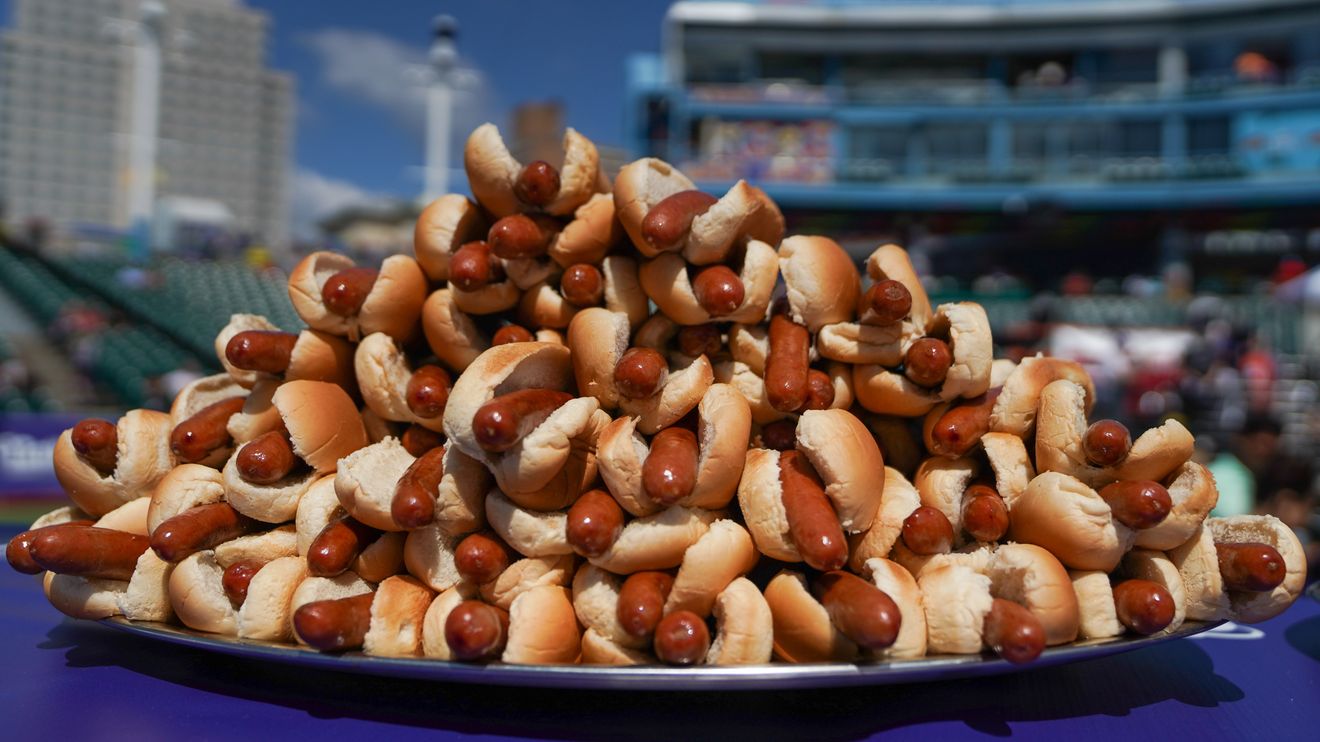Americans seemingly can’t get their fill of frankfurters, consuming an estimated 20 billion of them a year, according to the National Hot Dog and Sausage Council.
And if they need another excuse to fill up, there’s always National Hot Dog Day, which falls on July 19 and comes with assorted offers from restaurants, from 5-cent franks at participating Nathan’s locations (11 a.m. to 1 p.m. only) to free delivery of hot dogs and other menu items at Portillo’s (through July 23).
But if they’re looking to order a hot dog at some of the country’s biggest restaurant chains, such as McDonald’s or Burger King, they’ll be, um, frankly out of luck. Tube steaks may rule the day at family barbecues or at the ballpark, but they’ve never quite cut the mustard, so to speak, in the dining mainstream.
And it’s not like some of those chains haven’t tried adding hot dogs to the menu. Burger King introduced them in 2016, but despite a promise to feature the “the Whopper of hot dogs,” the menu item didn’t last. Similarly, McDonald’s offered a McHotDog at select locations over the years, but the McHotDog proved more like the McColdDog and didn’t become a fixture. (Neither Burger King nor McDonald’s responded to MarketWatch’s requests for comment.)
So, why are hot dogs such a hard sell in so many restaurants? Dining industry insiders and observers cite a multitude of factors.
Begin with this: Despite their popularity, hot dogs often get a bad rap in terms of what might be called the “mystery meat” factor.
“I think a lot of it comes down to, ‘What in earth is going into a hot dog?’” says Mark Kalinowski, a veteran fast-food industry analyst. Kalinowski adds that the fact hot dogs are a gas-station staple doesn’t exactly create a quality-oriented brand image for them, either.
Of course, some chains that do offer hot dogs will tout the quality of their ingredients. Nathan’s, perhaps the most iconic name in hot dogs with a history going back to 1916 (and let’s not forget its hot-dog eating competition, either), notes that its franks are all-beef and made with a secret recipe of spices. But Nathan’s marketing vice president Phil McCann also makes it clear that preparing a hot dog can take considerably more time and effort than preparing a hamburger (and yes, Nathan’s also sells burgers). In turn, that may explain why the major chains have shied away from hot dogs — at least as of late.
After all, a burger requires just a single flip of the patty during the grilling. But a hot dog — at least one that’s not made on a basic roller-style grill like you see in gas stations — requires a fair bit of moving around to make sure all the surfaces get the necessary attention and the meat has that perfect “snap” to it.
“It has to be staged accordingly,” says McCann.
Burgers also lend themselves to a great deal of tinkering, say culinary pros. There are countless choices to be made in terms of the meat, the bun and the toppings — to the point that the companion South Beach and New York City Food & Wine Festivals, both among the biggest culinary events in the country, have built their reputations in part on their Burger Bash competitions.
While there’s room for variations with hot dogs — and certainly some regional differences (think the fully loaded Chicago-style dog) — some argue that hot dogs just can’t compete in the creativity department.
“You can only do so much,” says Ed Cotton, chef and partner at Jack & Charlie’s No. 118, a New York City restaurant. Naturally, Cotton has a burger on his menu — a high-end bacon cheeseburger priced at $27. He says he considered offering an “elevated” hot dog, but ultimately nixed the idea.
Still, others say the hot dog is due for its day.
Among those frank fanatics: Dennis McKinley, owner of the Original Hot Dog Factory, an Atlanta-based chain with 14 locations across the country.
McKinley has made hot dogs in every conceivable style his calling card, from a Street Polish Dog (Polish sausage with grilled onions, mustard and sport peppers) to a Hawaiian Dog (beef hot dog with bacon, cheese, grilled onions and grilled pineapple). He says demand is growing such that he anticipates having 30 locations by 2025.
But to achieve even greater growth, McKinley is hoping that the major fast-food chains will also come to embrace the hot dog and boost its overall profile — a kind of rising-tide-raises-all-franks way of looking at the dining scene.
“I think we need to shed some light on the best sandwich in America, which is the hot dog,” McKinley says.
Read the full article here








